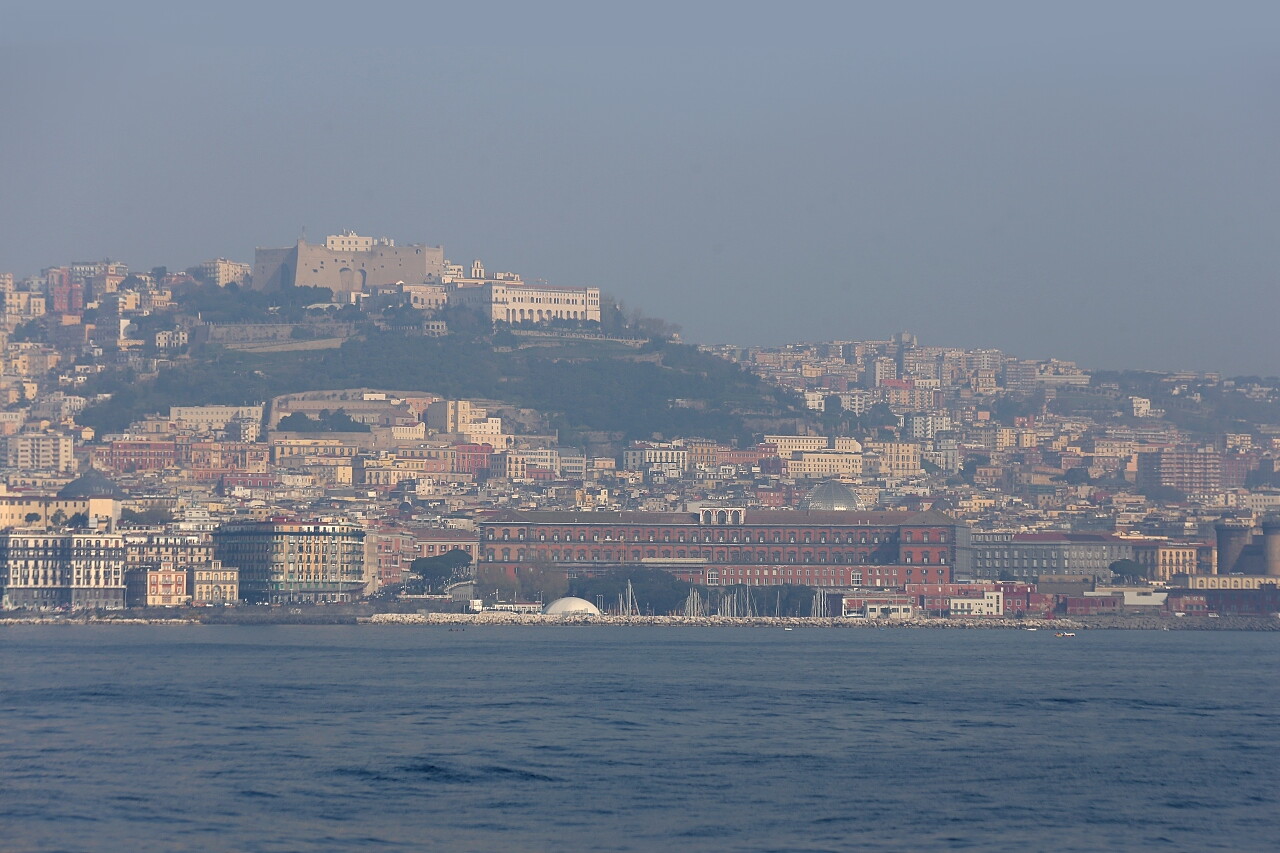Along the Gulf of Naples by Ischia-Naples Ferry
With a half-hour delay, our ferry passed the narrow exit of Porto di Ischia harbor and entered the Gulf of Naples. There is a wonderful island left astern, where I spent an unforgettable five days and hope to return here again. Right now, the ferry is heading to Naples, and I'll tell you what you can see from the ferry during this little cruise.
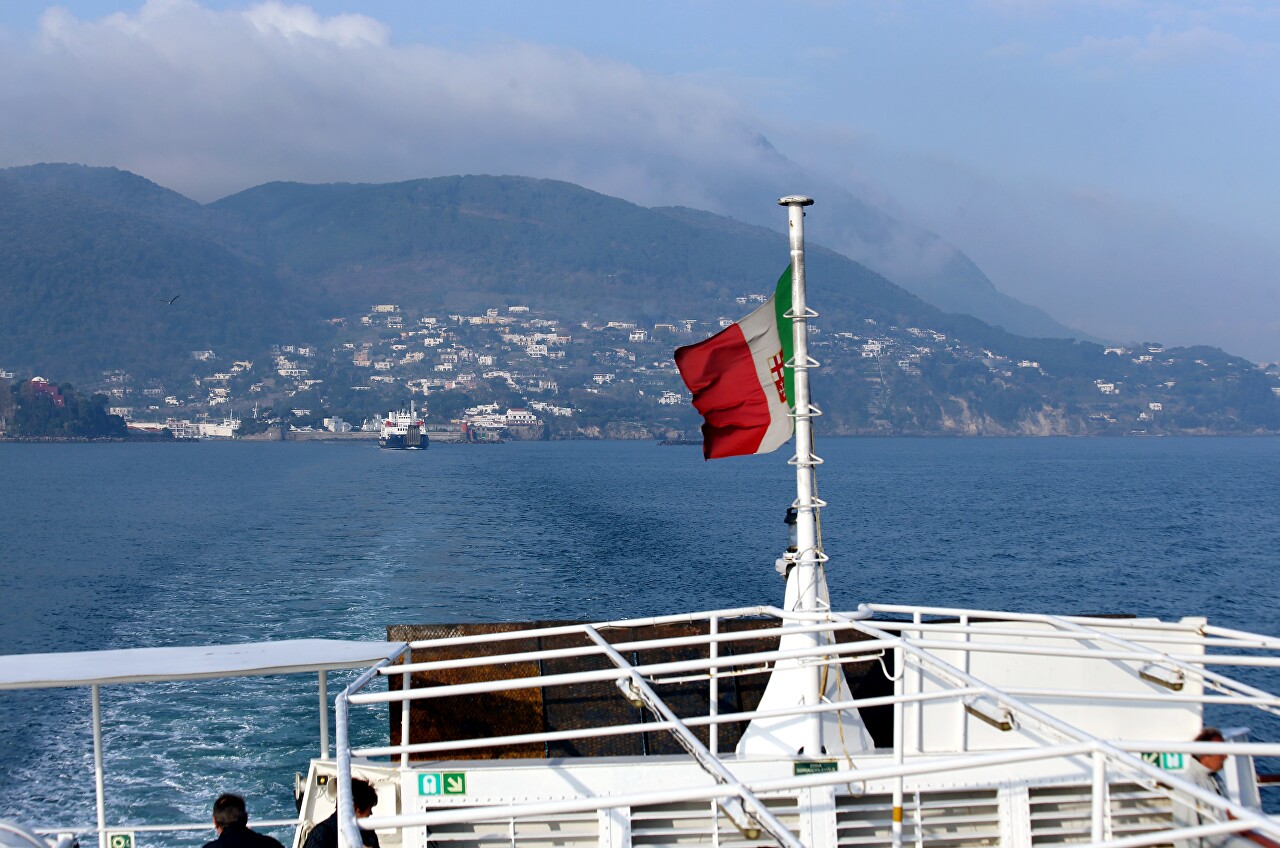
There are a lot of passengers today, even on deck, where it's not hot at all in the morning. Then I thought that I had done the right thing by buying a ticket in the evening, otherwise I would have had to stand in a long queue at the ticket office. I must say that the departure of the ferry was delayed for about 20 minutes, until the last person who wanted to leave on it bought a ticket and boarded.

When I went down to the passenger compartment, I found that I could only sit on the floor - absolutely all the seats were occupied.
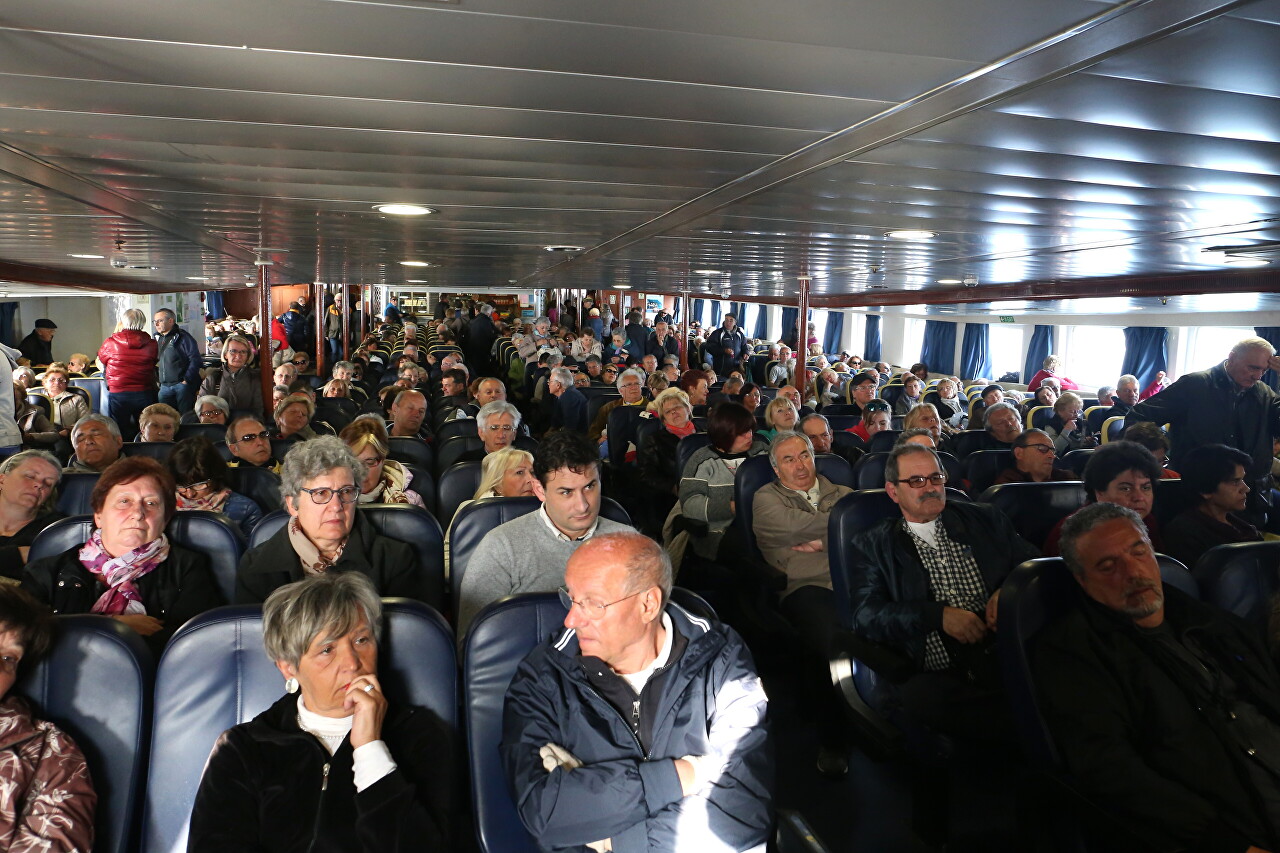
Sitting down by the window, I took out my battered Nokia and started recording my impressions on Facebook-Libre WiFi worked perfectly, despite the huge number of passengers. After a while, I glanced out the window and hurried to the deck, narrowly missing the stunning panorama of Procida Island to my right and the extinct volcano of Monte Epomeo in the background.
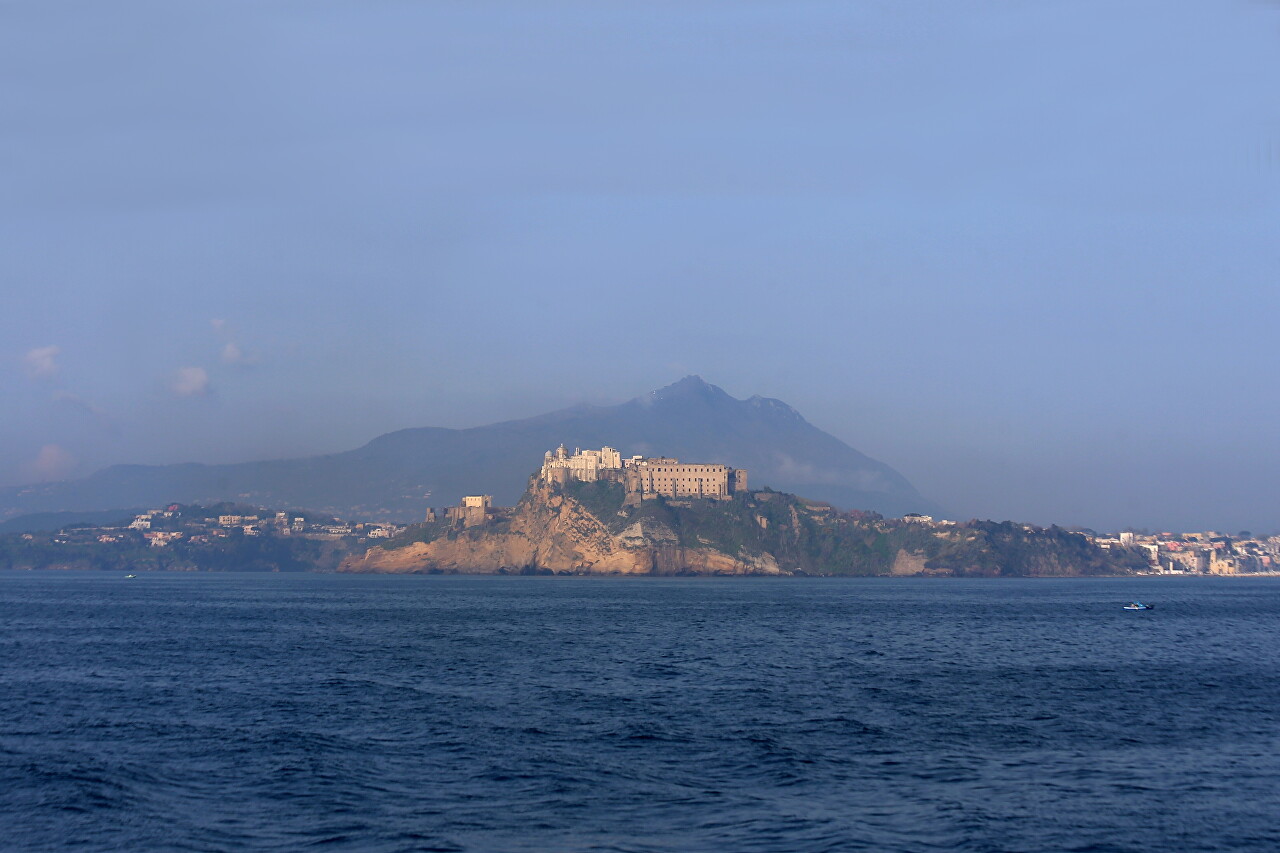
In the soft rays of the morning sun, the fortress of Terra Murata could be seen in great detail, of course, through a telephoto lens. When I sailed to Ischia, this side of the fortress was already in shadow.
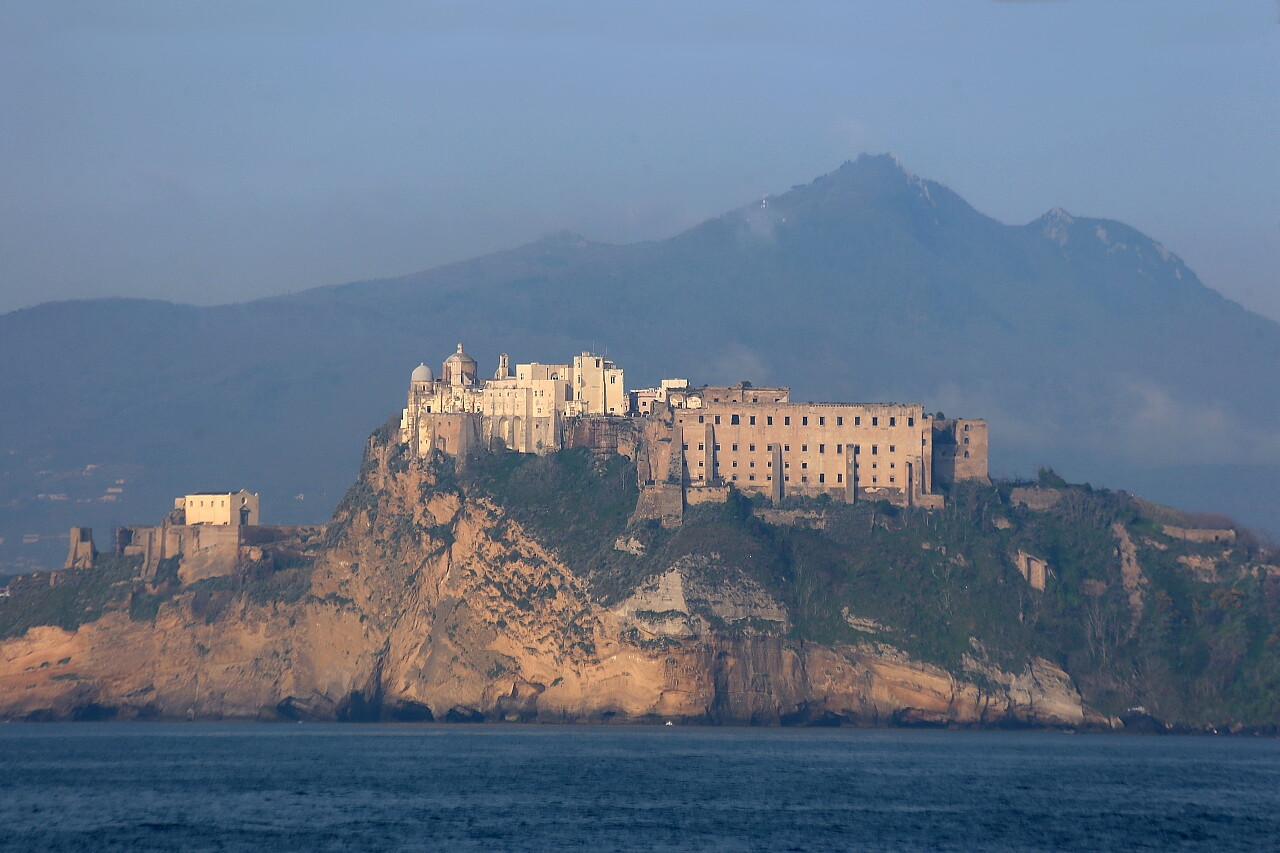
To the left, as it may seem, stands another island, but it is a peninsula that stands out far into the sea. Cape Miseno (Capo Miseno) is named after the character of the ancient Greek epic "Aeneid" trumpeter Aeneas. It was he who called Triton to battle with his trumpet, for which he was thrown into the sea and drowned. A rock with steep steep banks 146 meters high, connected to the land by a narrow sandbar. This yellow tuff formation is the cone of an ancient volcano that existed between 35 and 10 thousand years ago.
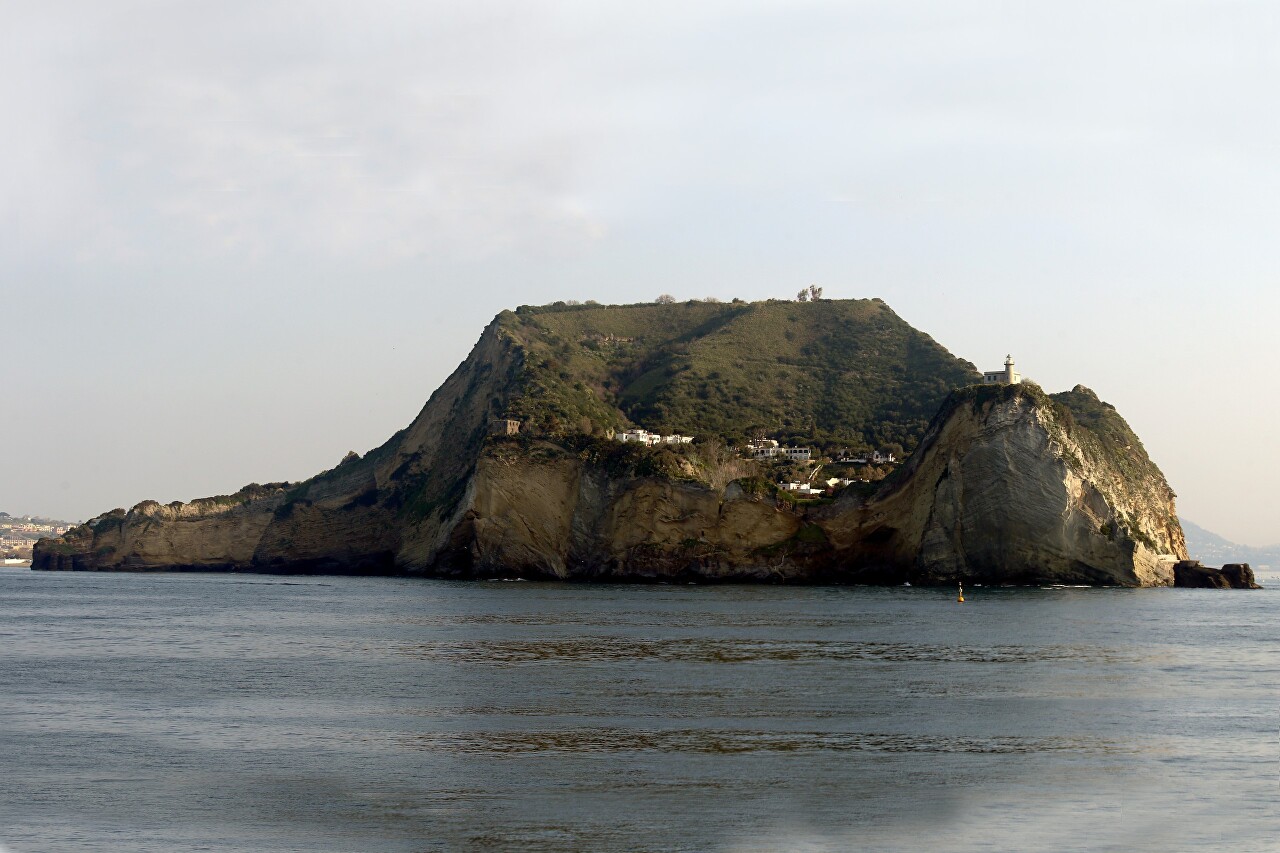
As a result of the eruptions, the rock was covered with a thick layer of volcanic ash, which formed unique soils in terms of a set of trace elements - grapes were grown on a gentle slope facing the coast from ancient times. On the peninsula, among the villas and farms, you can find many ruins of the Roman era.
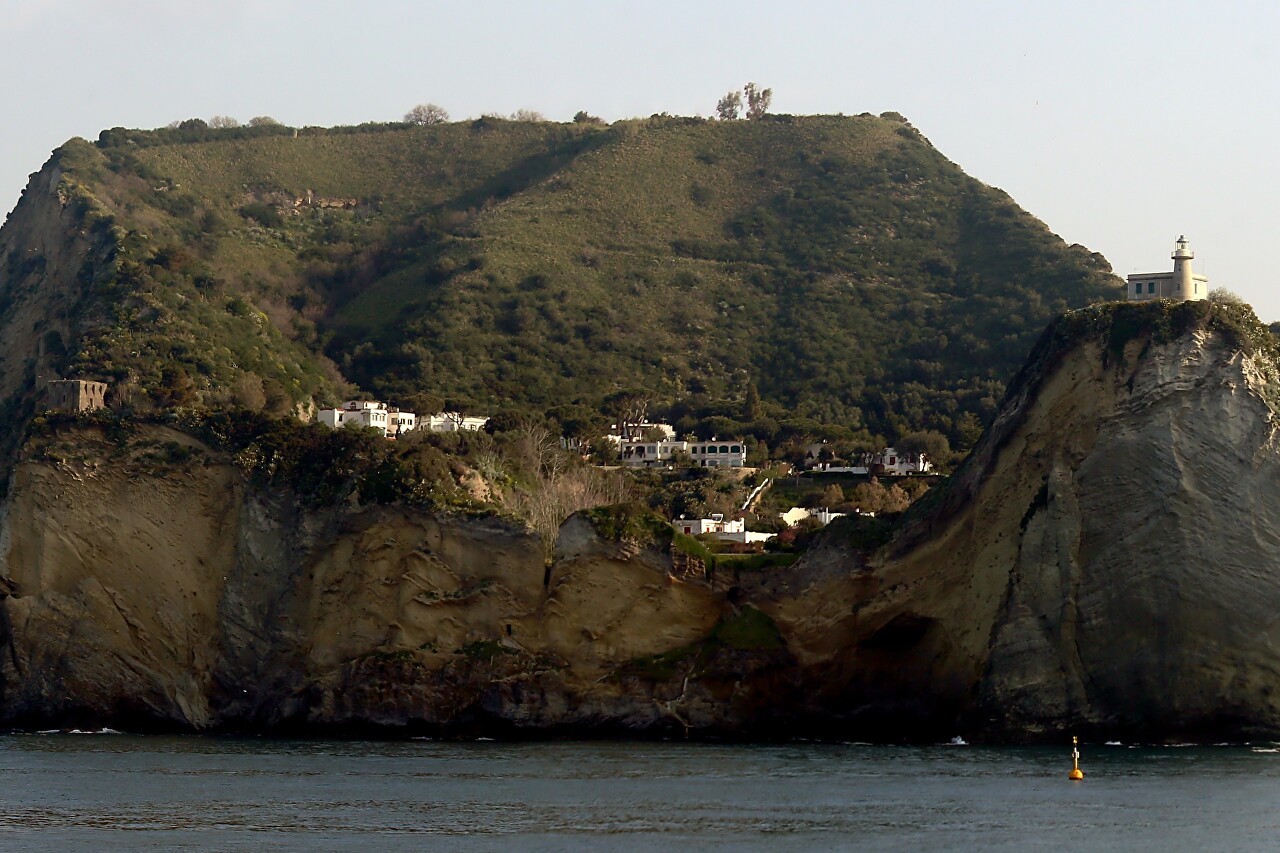
The Faro di Miseno lighthouse is notable for the fact that it can only be reached through a tunnel cut through the rock.
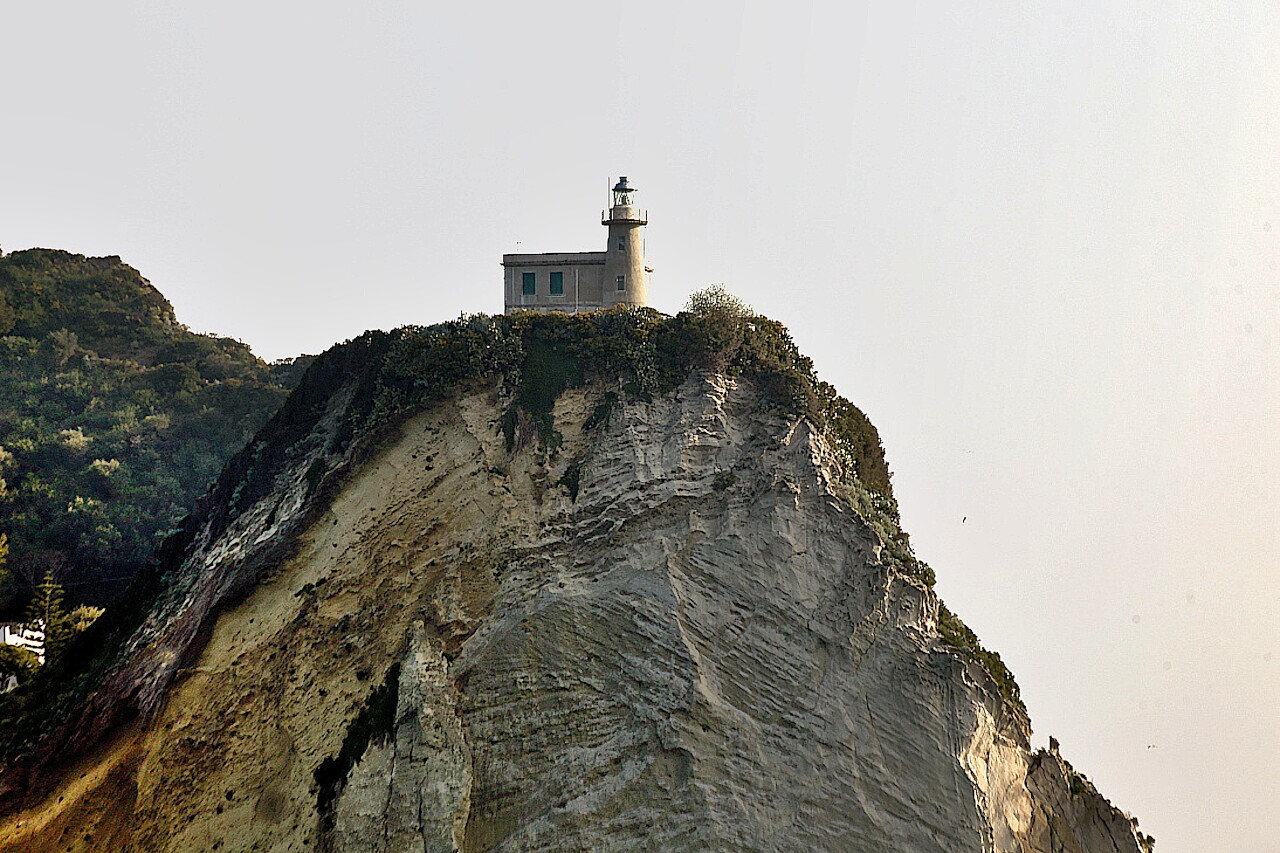
At the southern tip of the cape there is a small stone island with two circular defensive structures, and on the peninsula itself there are many bunkers and artillery caponiers and underground galleries built in the time of Mussolini. The garrison of the peninsula defended the entrance to the naval base of Naples.
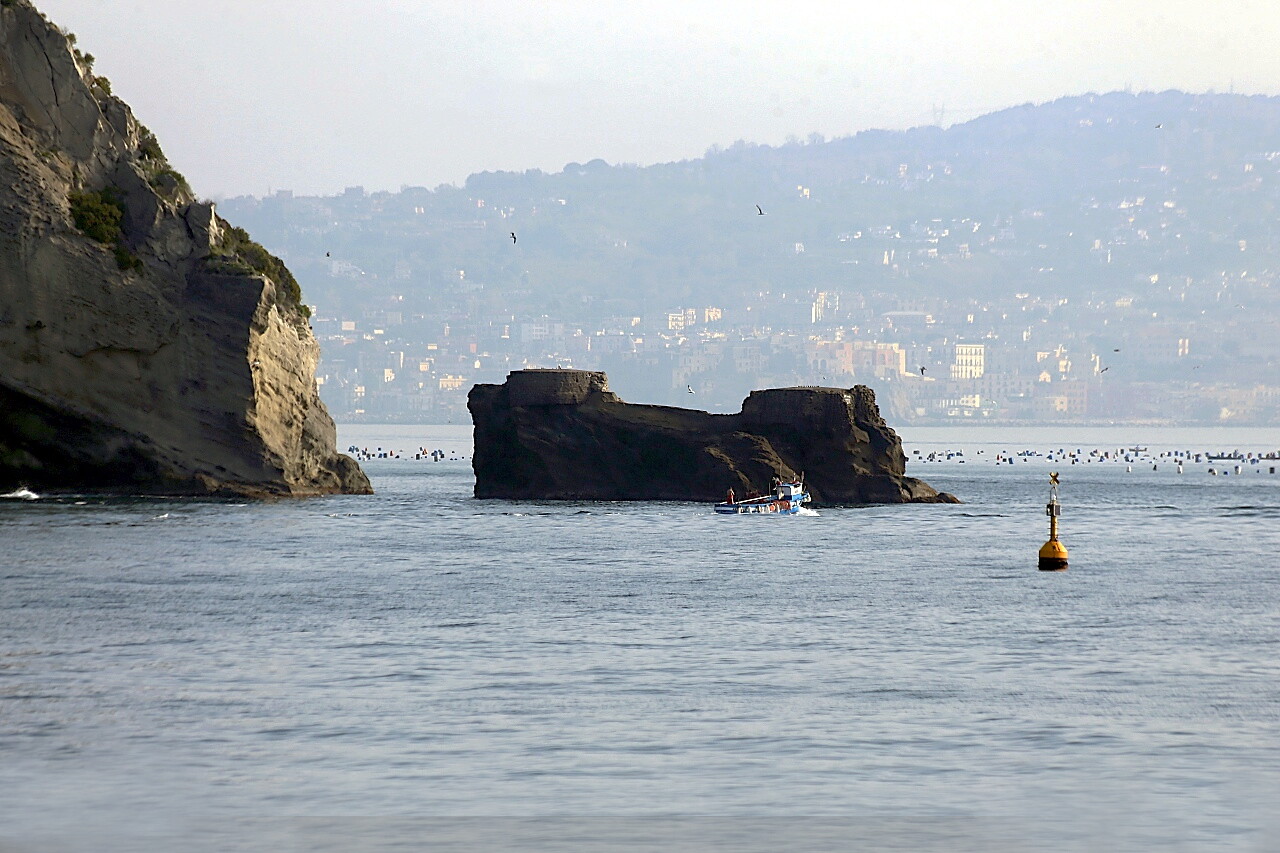
Behind the promontory, you can enjoy a view of Pozzuoli, the western district of Naples.

The coast of the Phlegraean Fields was once occupied by an industrial zone, now it is abandoned.
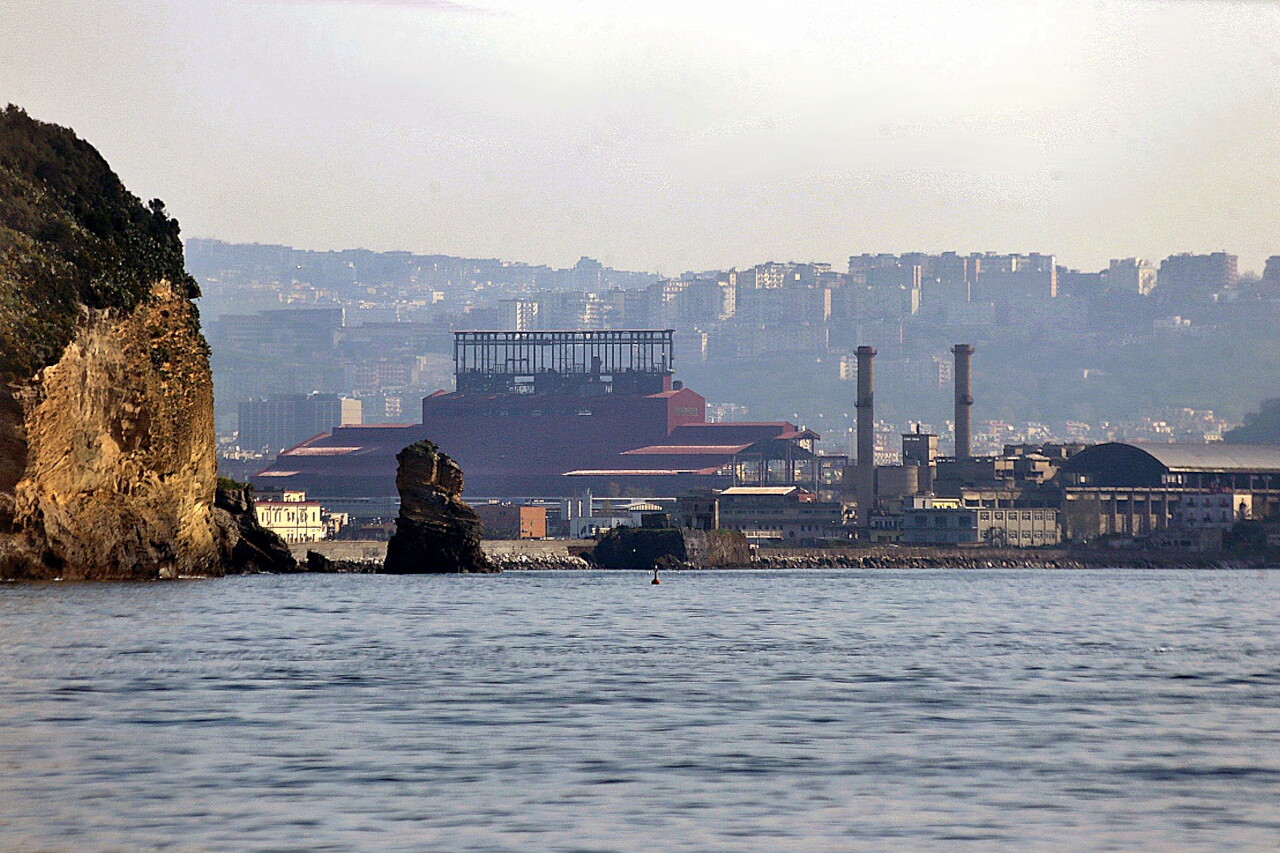
A high-speed hydrofoil motor ship (here they are called "Aliscafo") passed on a counter course. You can get from Naples to Ischia and other islands twice as fast as by ferry, but also twice as expensive.
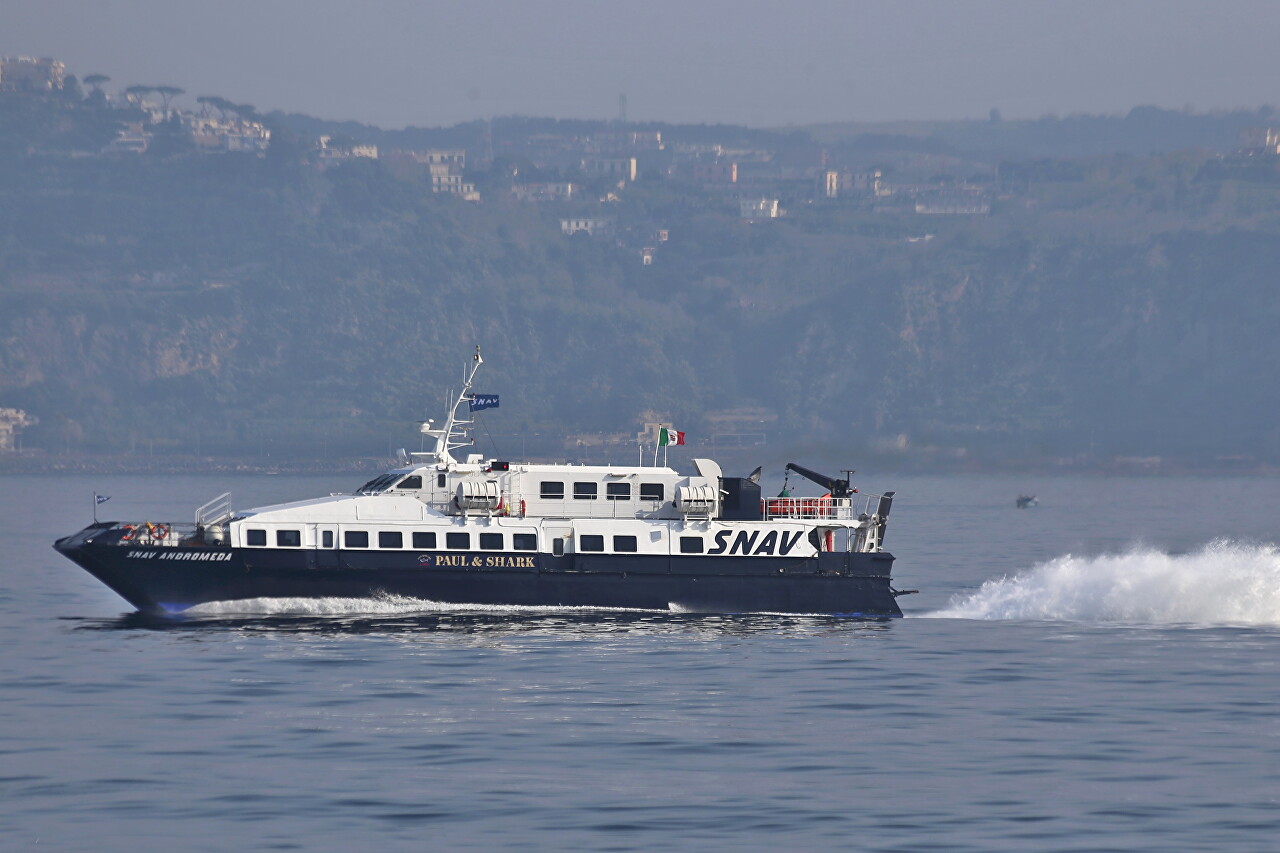
Nisida Island is also a volcanic cone rising out of the water, connected to the shore by an artificial causeway.
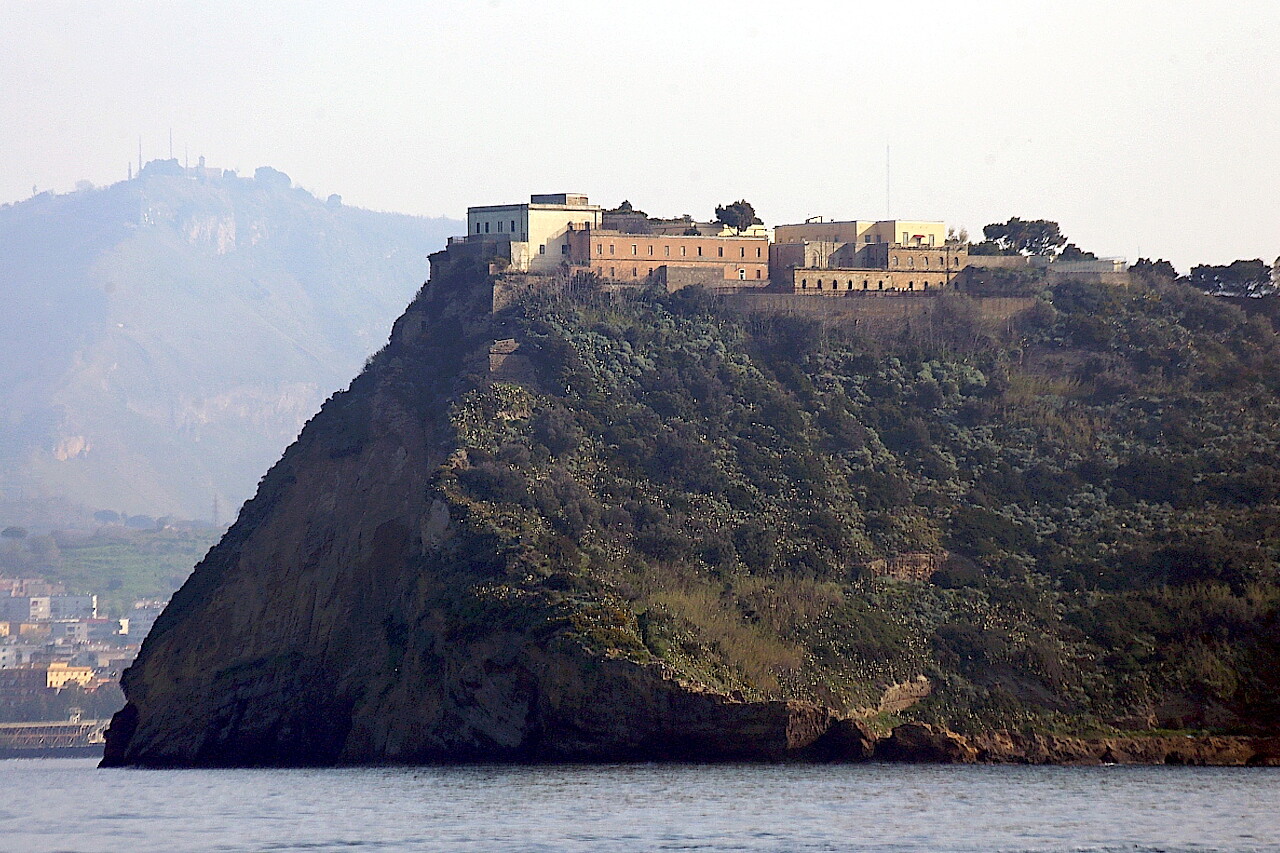
Villa Roseberi , one of the most striking neoclassical monuments in Naples, was built in the first half of the 19th century by Joseph de Thurn, an Austrian admiral. After his death, it was bought by the royal family, then served as a resort for foreign ambassadors. Today it is one of the three official residences of the President of the Italian Republic. The villa is surrounded by a large park with a rich collection of diverse vegetation.
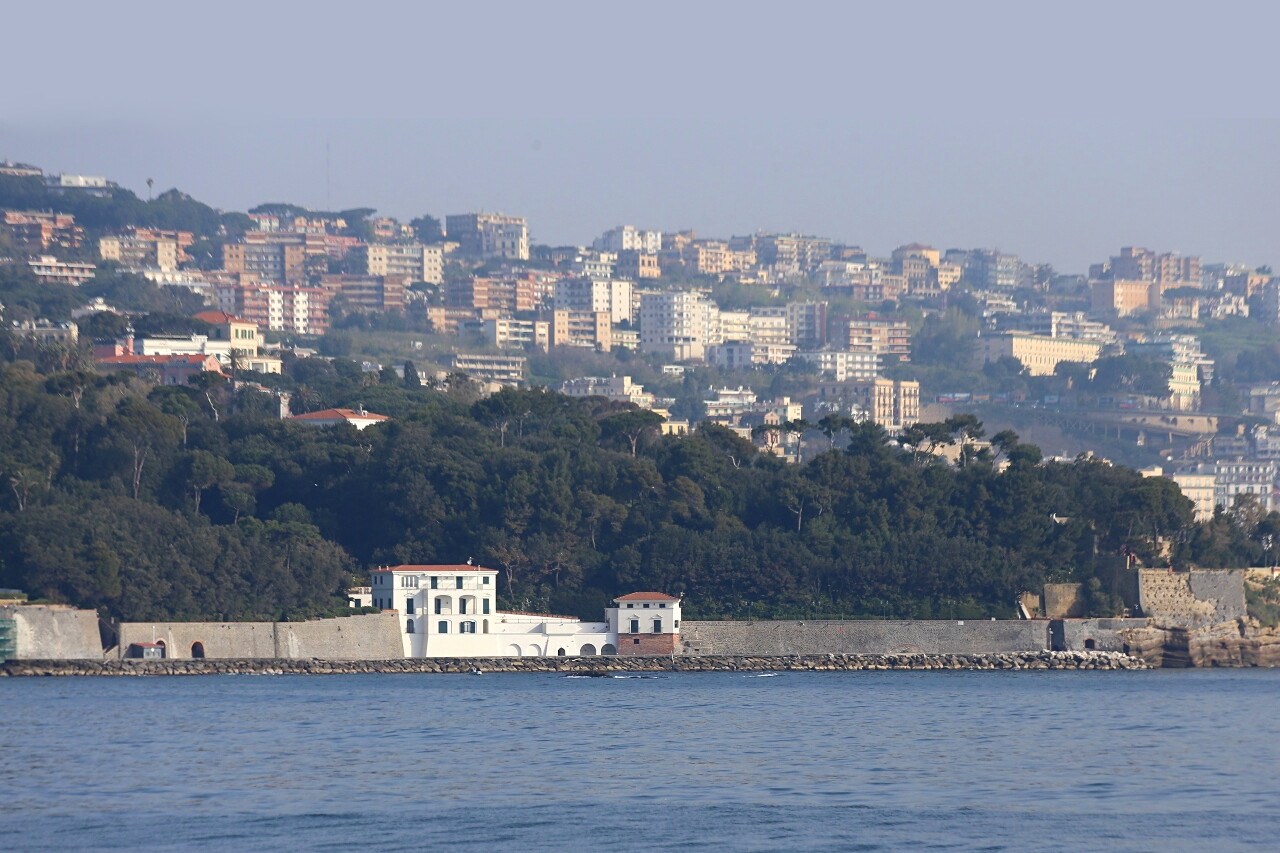
Let's look back and take another look at the yellow cliffs of Capo Miseno. Now you can see the grotto on the left side of the peninsula.
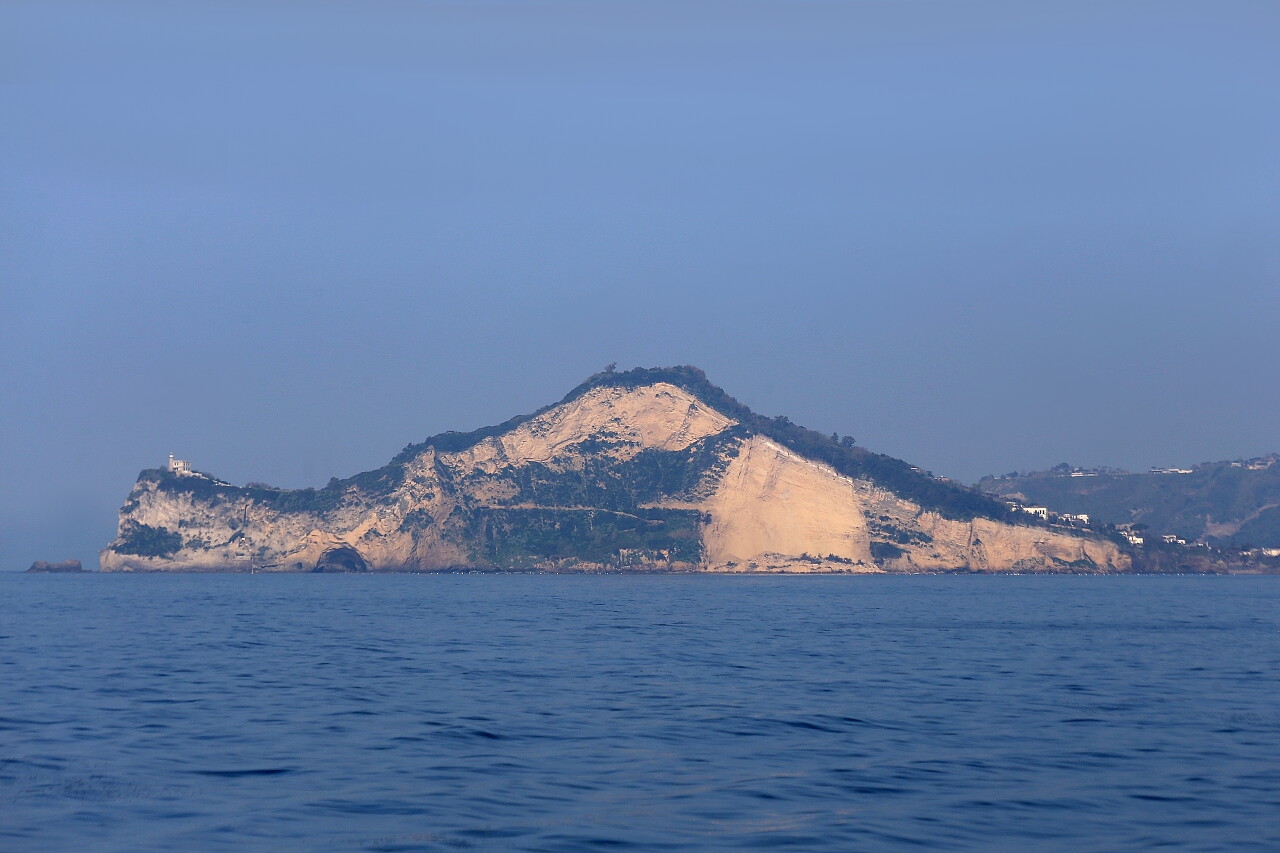
And this is closer to the center - the Posillipo district. You can see the church of Santa Maria di Bellavista, behind it the dome of the mausoleum of Mateo Cilizzi.

Villa Fattorusso is usually rented out entirely for official and entertainment events. In summer, the villa offers a children's camp with language courses. For VIP kids, of course.
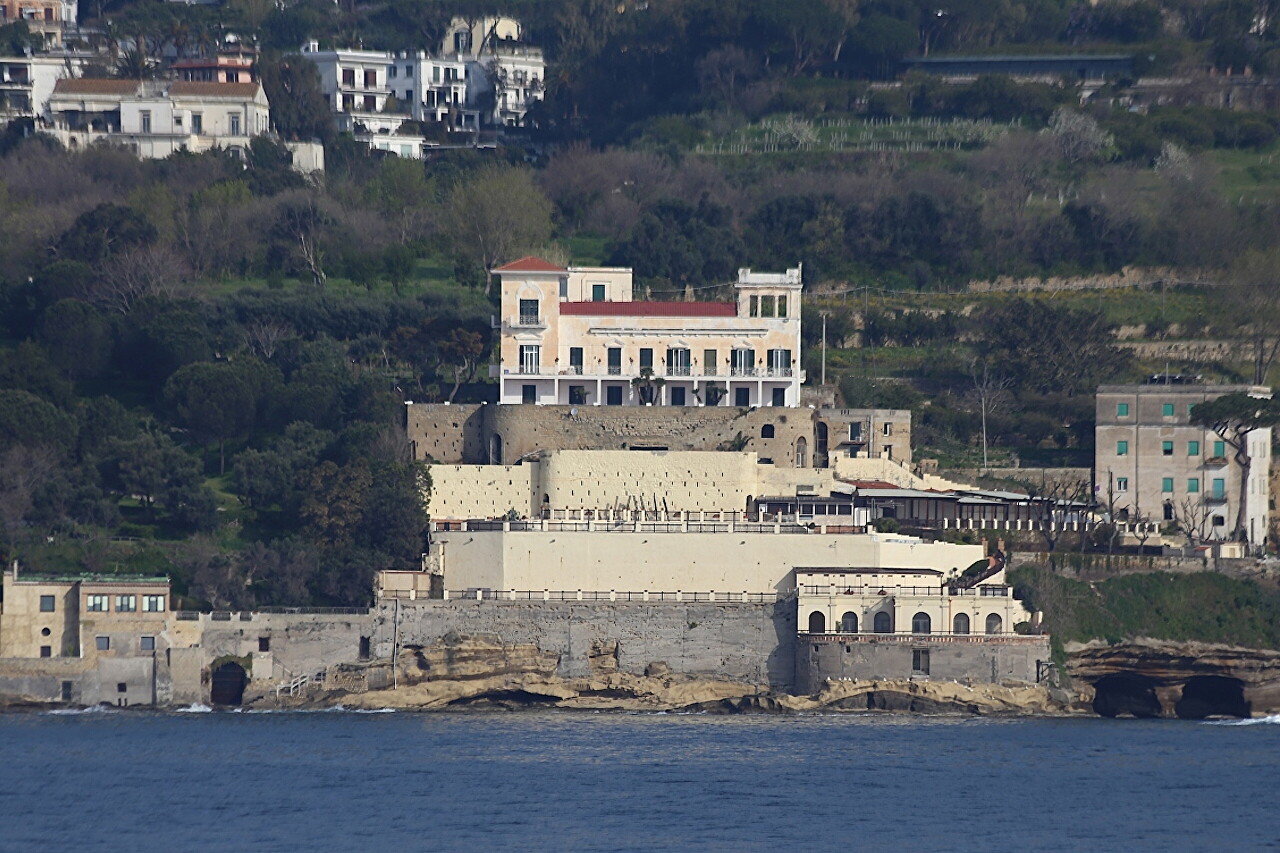
The districts of Chiaia, and above it, Vomero, are the most prestigious in Naples. It is much quieter and cleaner here than in the historical part of the city.
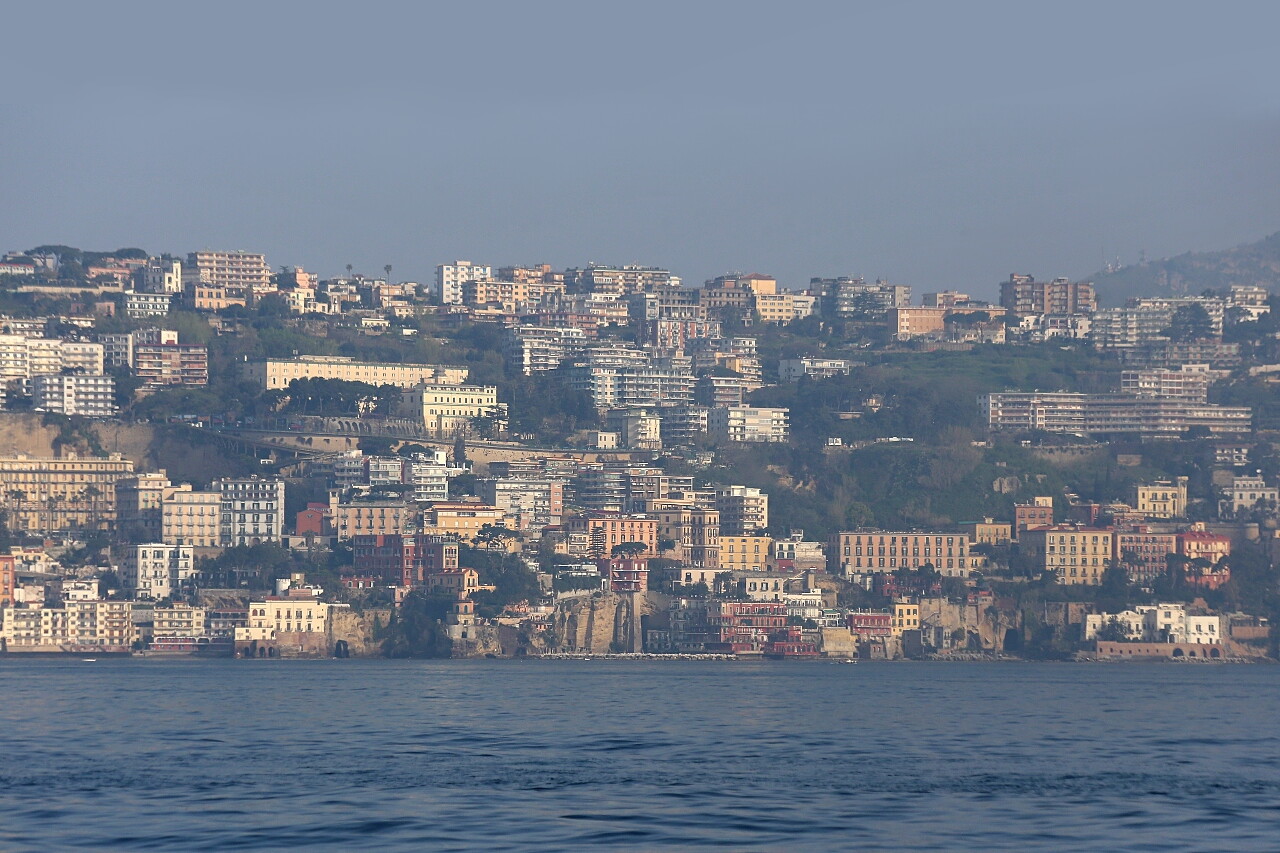
Another fast boat aliskaf. I rode one in Capri 3 years ago.
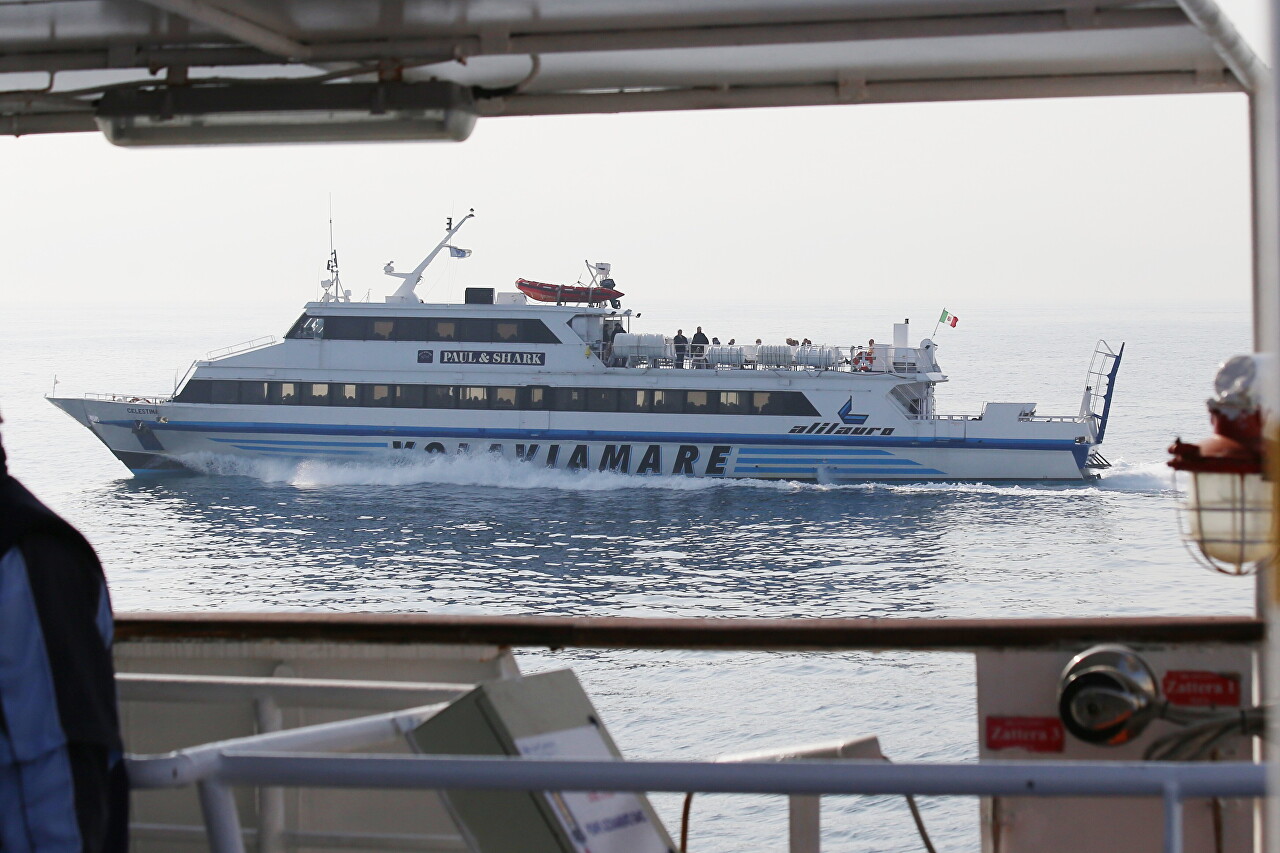
I want to say that I liked the ferry trip to the Gulf of Naples better. On a high-speed ship, it's not very comfortable on the open deck, and it's noticeably swaying - it's not very romantic to take photos.
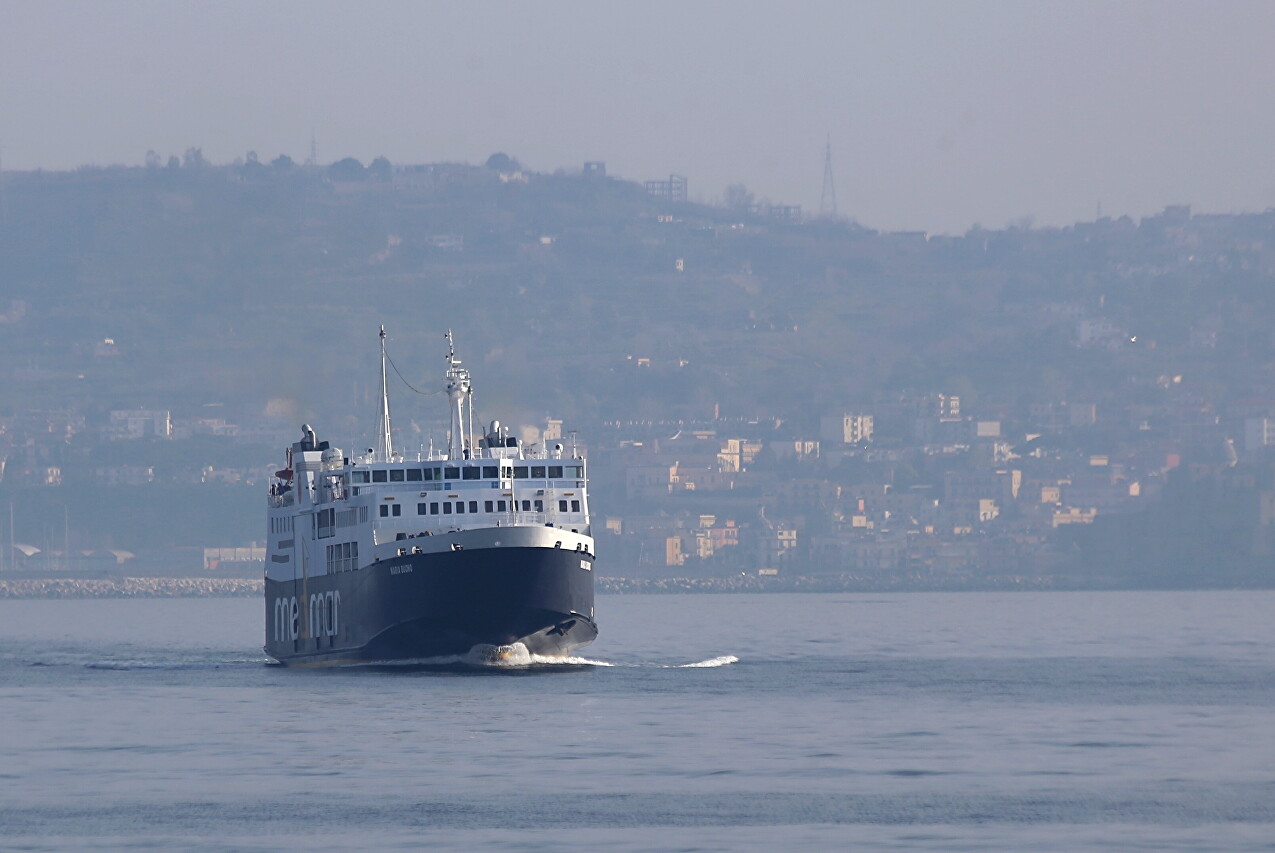
Lungomare Francesco Caracciolo, the sea front of Naples.
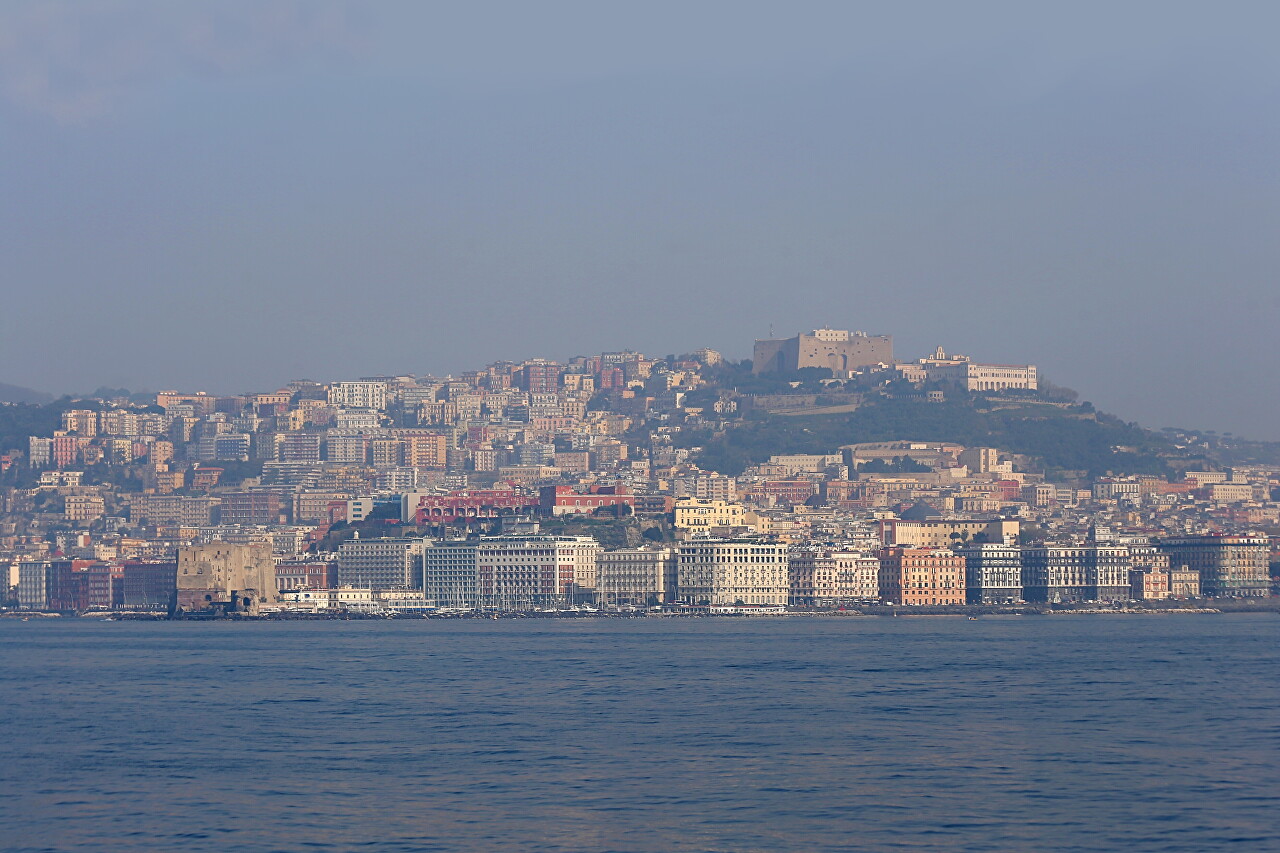
On the island of Santa Lucia is the castle of Eggs (Castel dell'Ovo). The name comes from a magical egg supposedly laid by Virgil at the base of the castle. The egg was supposed to ensure the inviolability of the castle.
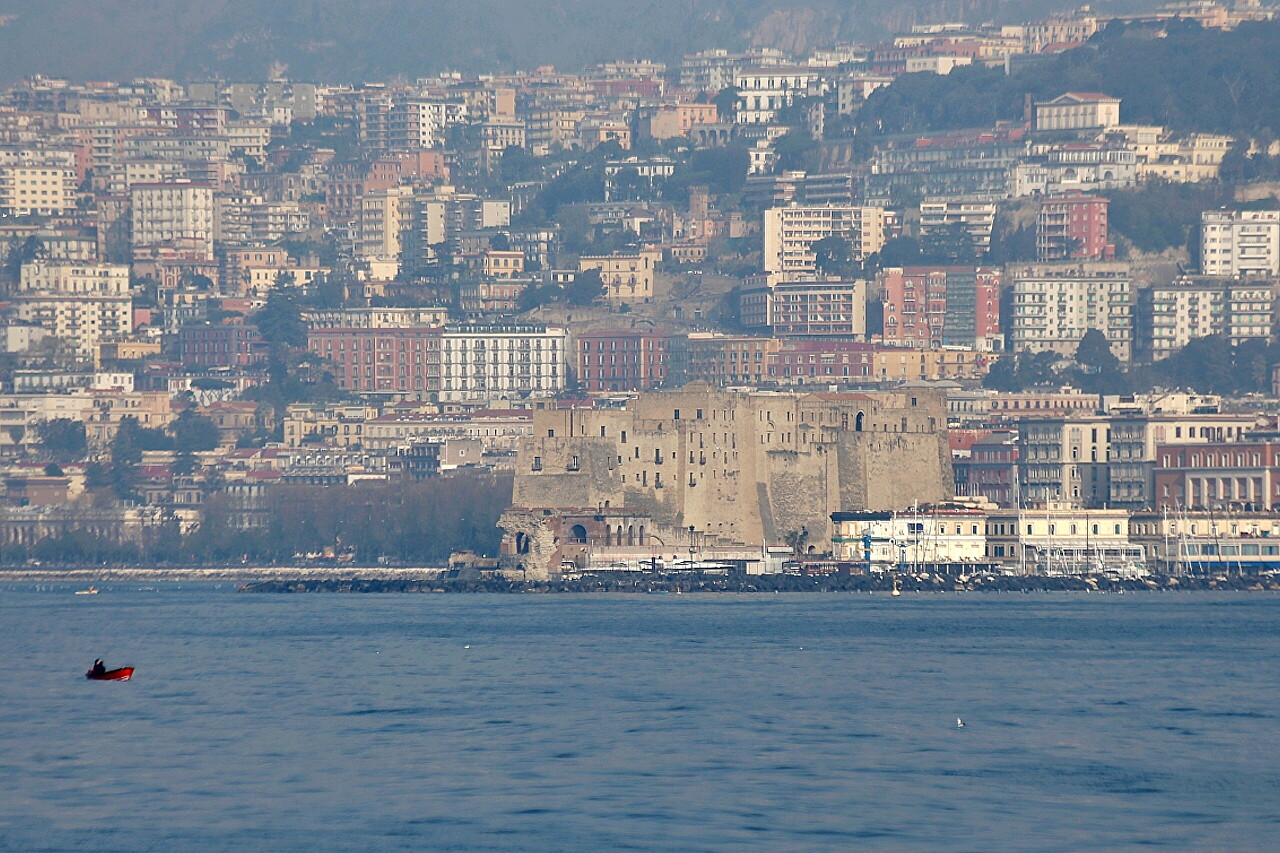
At the top of the city, you can see the bastions of the Castel Sant'Elmo castle, just below the white-stone monastery of San Martino (Certosa di San Martino).
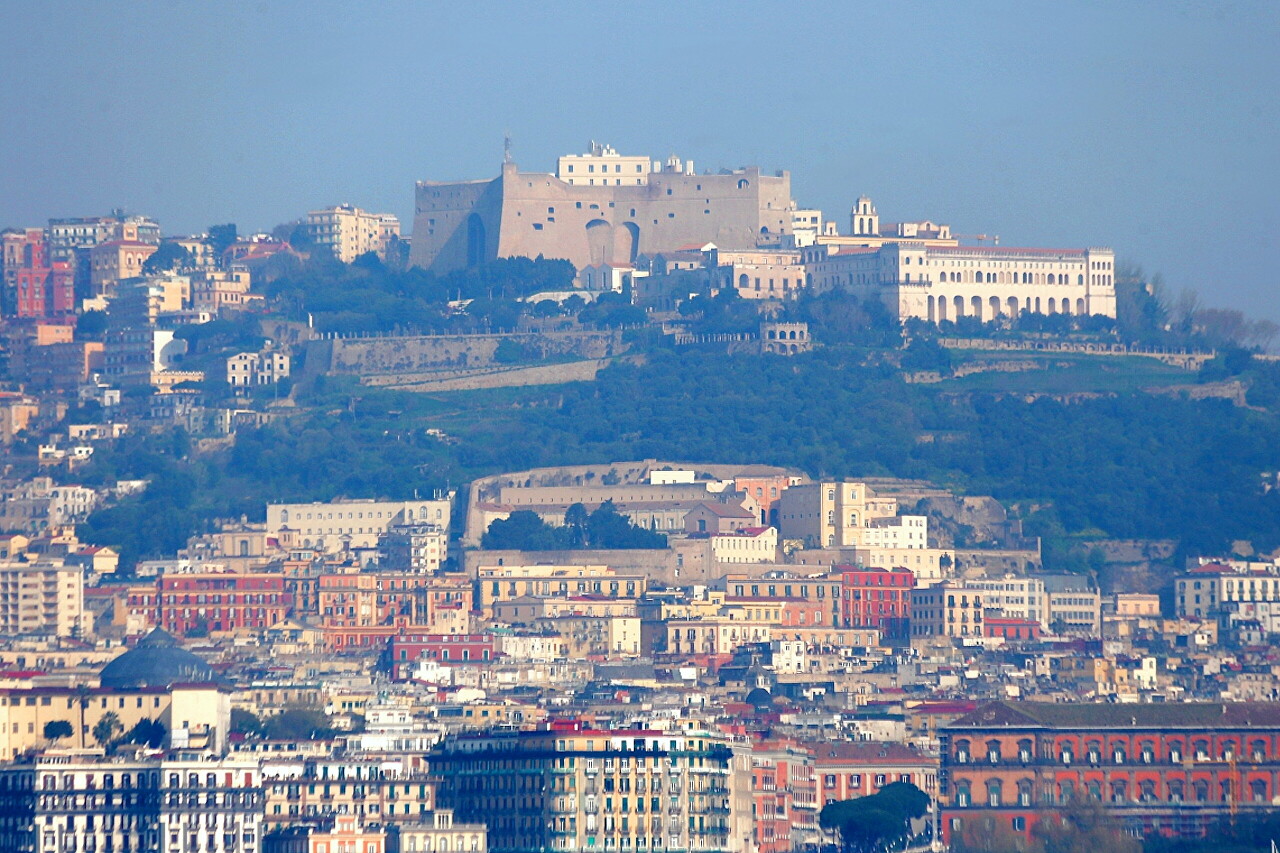
Here is the center of the city-the royal Palace. Our ferry is approaching the port of Naples. The first visit to the beautiful island of Ischia is over. I hope it's not the latter.
